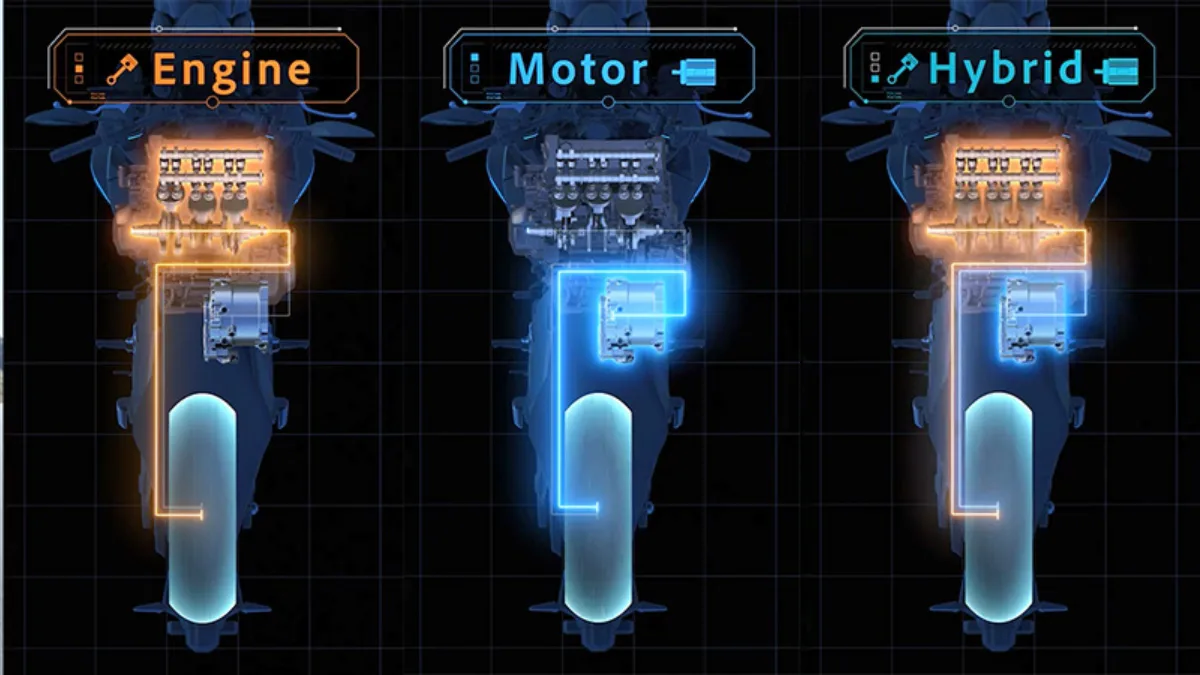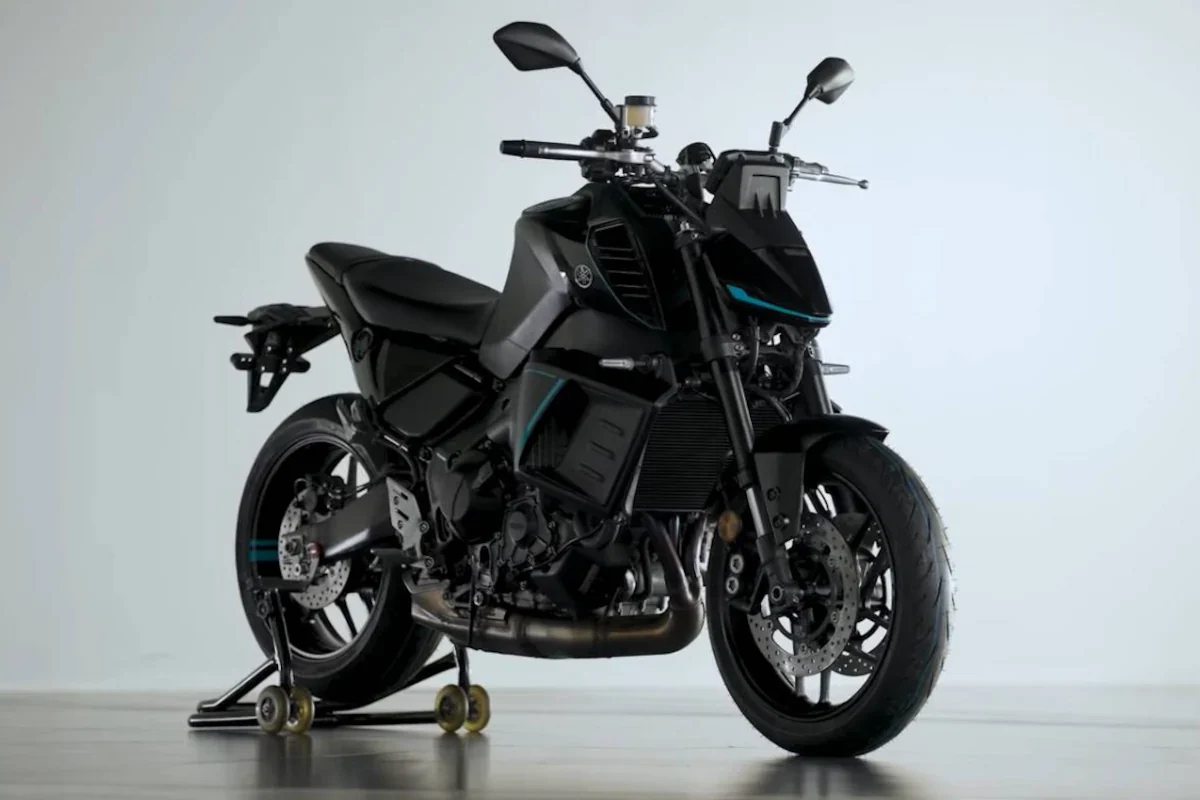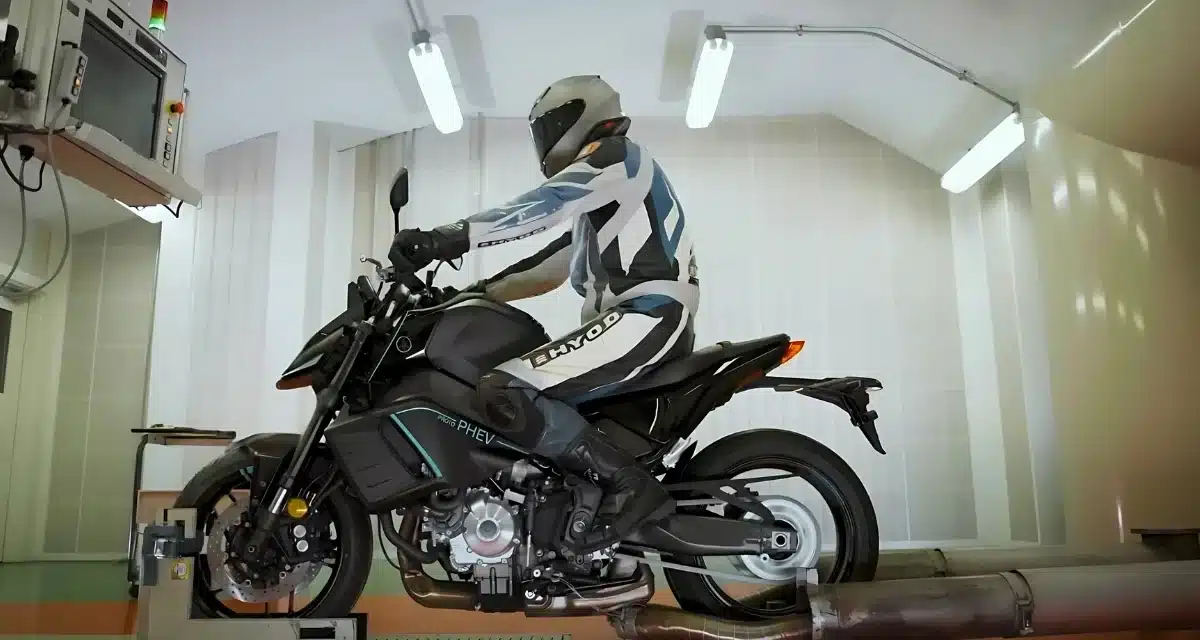The roar of a gasoline engine and the silent thrust of electric power collide in Yamaha’s latest innovation—the MT-09 Hybrid Prototype.
As motorcycle enthusiasts increasingly demand eco-conscious options without sacrificing performance, Yamaha is betting big on its Series-Parallel Hybrid Electric Vehicle (SPHEV) system.
But does this hybrid powerhouse deliver the best of both worlds, or is it a compromise?
The Hybrid Revolution Hits Hyper Naked Bikes
Yamaha’s MT-09 has long been a favorite for its raw, unfiltered performance. The 890cc CP3 engine’s growl and agile handling have defined the “Hyper Naked” category. Now, Yamaha is reimagining this icon with a hybrid powertrain that pairs the beloved triple-cylinder engine with an electric motor.
With states like California pushing for stricter emissions standards and riders craving greener options, hybrids like the MT-09 offer a bridge between tradition and innovation. But this isn’t just about compliance—Yamaha promises enhanced acceleration and a unique sensory experience.
The SPHEV Technology

Yamaha’s MT-09 Hybrid Engine
At the core of the MT-09 Hybrid is Yamaha’s SPHEV system, a sophisticated blend of series and parallel hybrid architectures. Here’s how it works:
- EV Mode: Silent, zero-emission rides at low speeds (perfect for city commutes).
- Hybrid Mode: The gas engine kicks in seamlessly for highway bursts, working with the electric motor for optimized power.
- Boost Mode: Combines both power sources for “unprecedented acceleration” (Yamaha’s words, not ours).
Key innovation: Unlike Kawasaki’s parallel-only hybrids, Yamaha’s system lets the engine act as a generator, charging the battery independently. This flexibility could mean better efficiency on long rides.
But there’s a catch: The electric motor sits above the engine, raising the bike’s center of gravity. Early concerns? A potential trade-off between agility and hybrid heft.
Radical Design where Form Follows Function
Yamaha didn’t just tweak the MT-09—they gave it a cyberpunk makeover. The prototype features:
- A sharp, futuristic LED headlight that screams “tech-forward.”
- A prominent heat sink grille on the faux tank (critical for cooling the hybrid components).
- A secondary LCD display for battery status, ensuring riders never lose track of their electric range.
While the design is bold, it adds bulk. The standard MT-09 weighs 425 lbs, but the hybrid could tip the scales at 500+ lbs. For context, that’s heftier than Kawasaki’s Ninja 7 Hybrid (503 lbs) and on par with electric rivals like the Zero SR/F.

Yamaha’s MT-09 Hybrid Prototype
More Power, More Complexity?
Yamaha claims the hybrid system will deliver “exhilarating pleasure” by blending the CP3 engine’s roar with the electric motor’s instant torque. Here’s what we know:
- Acceleration: Boost mode could push performance beyond the standard MT-09’s 117 hp, especially off the line.
- Handling: The added weight and higher center of gravity might dull the MT-09’s famed agility. Suspension tuning will be critical.
- Sound: Yamaha emphasizes the “thrill” of transitioning between electric silence and the CP3’s signature snarl. Critics, though, wonder if it feels gimmicky.
Real-world test rides are still under wraps, but Yamaha’s promo videos show smooth mode transitions—a good sign.
Market Reality
Yamaha hasn’t announced U.S. pricing, but industry insiders speculate the MT-09 Hybrid will land between $14,000 and $16,000. That’s a steep premium over the standard MT-09 ($10,199) and Kawasaki’s Ninja 7 Hybrid ($12,499).
Who’s it for?
- Tech-savvy early adopters willing to pay for cutting-edge innovation.
- Eco-conscious riders who want reduced emissions but aren’t ready for full electric.
- Performance seekers intrigued by the hybrid “boost” effect.
Competition check:
- Kawasaki Ninja 7 Hybrid: Cheaper, lighter, but with a smaller 451cc engine.
- Zero SR/F: All-electric, faster, but limited range (~100 miles) and a $20,495 price tag.
Environmental Impact
The MT-09 Hybrid isn’t a zero-emission solution but a strategic move for Yamaha’s 2050 carbon-neutral goals. By optimizing the ICE for efficiency and offering EV-only urban riding, it could slash fuel use and emissions compared to traditional bikes.
However, hybrids face a regulatory squeeze. California’s proposed 2035 zero-emission mandate for motorcycles (still in debate) could make this a transitional technology. Yamaha’s hedging its bets with parallel investments in EVs and hydrogen projects.
Bridging the Gap or a Niche Experiment?
The MT-09 Hybrid is a bold statement. It proves hybrids can be thrilling, not just practical. But challenges remain:
- Pros: Novel tech, reduced emissions, Yamaha’s performance legacy.
- Cons: Added weight, higher cost, and uncertain reliability of complex systems.
Expert take: “This isn’t just a motorcycle—it’s a bridge to motorcycling’s electric future,” says a Yamaha engineer. For riders craving innovation and flexibility, the hybrid could be a revelation. For purists? The standard MT-09’s simplicity still reigns.
What’s Next?
Yamaha plans to refine the SPHEV system, with potential expansions to models like the Tracer 9 GT+ for touring enthusiasts. Demo events are expected in late 2025—sign up at your local dealer for a test ride.
In the meantime, the MT-09 Hybrid sparks a crucial question: Are you ready to embrace the hybrid revolution, or will you wait for electric tech to mature?


